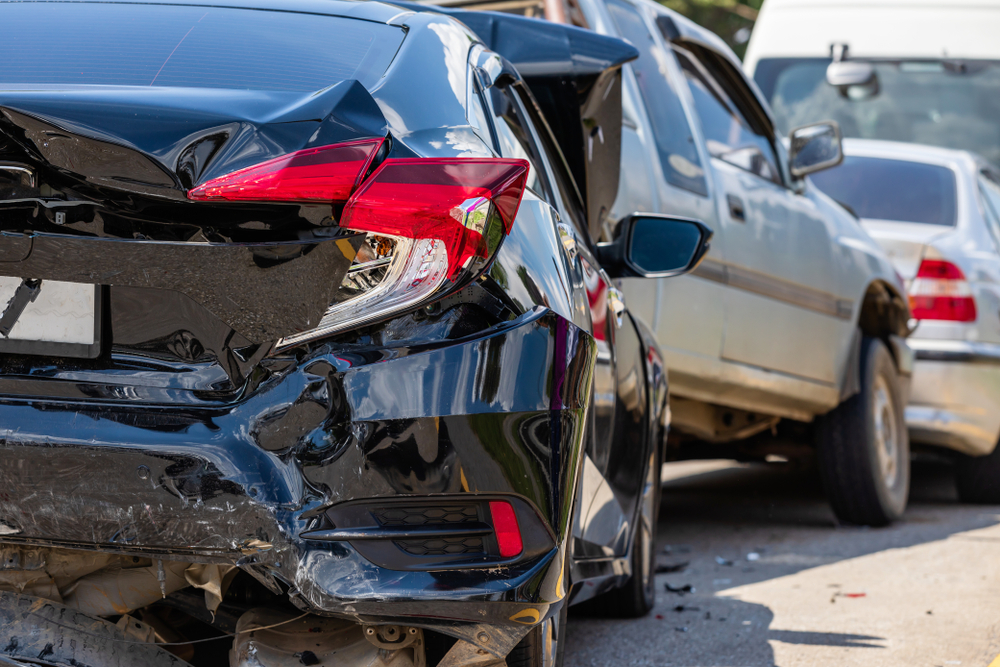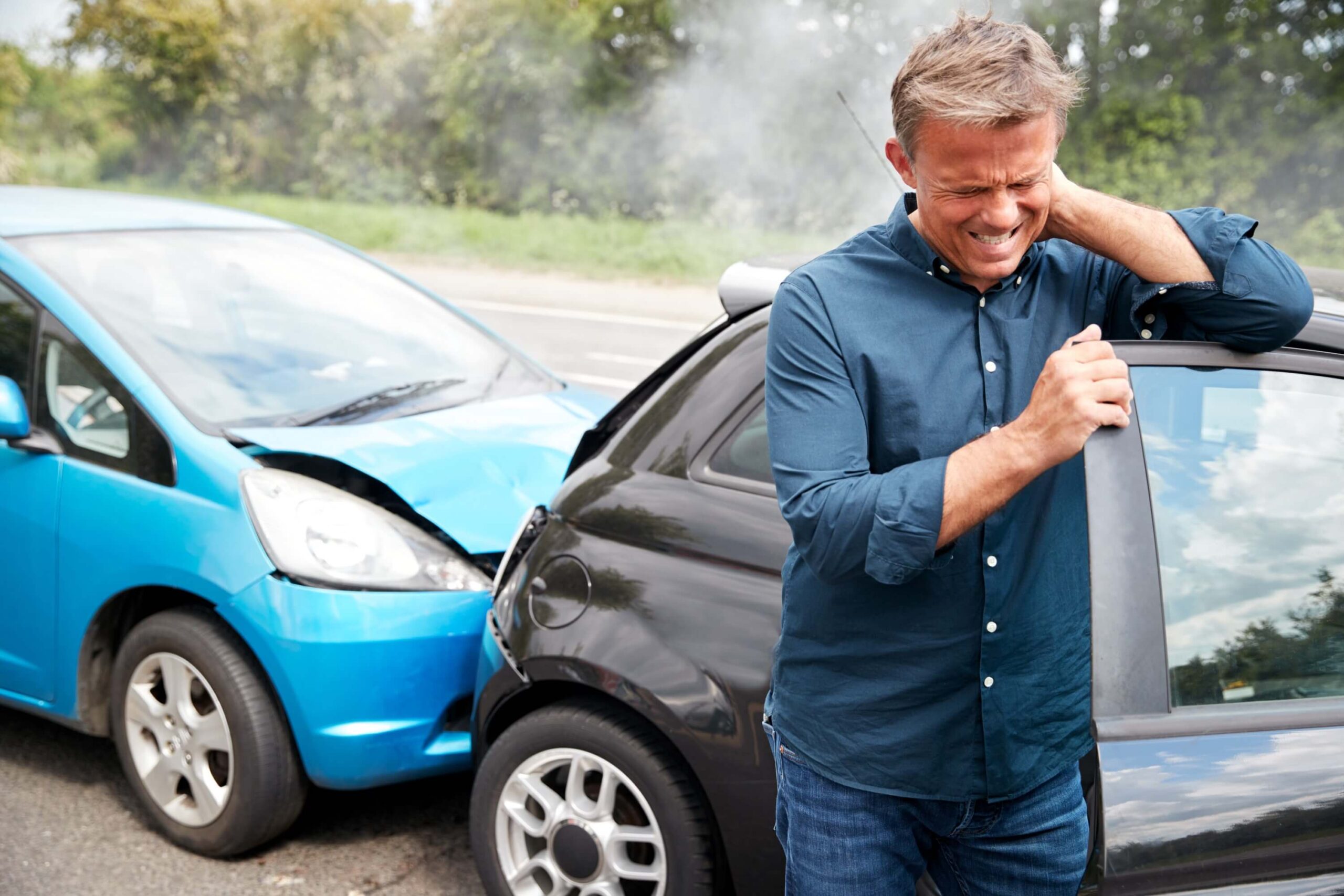Rear-end collisions are among the most common types of car accidents in California, and they pose serious risks to drivers and passengers alike. These accidents may occur when a driver fails to maintain a safe following distance, leading to high-speed impacts that can cause serious injuries.
The sudden nature of rear-end collisions can result in spinal cord injuries, traumatic brain injuries, or even wrongful death for the victims. A seasoned Stockton personal injury attorney can hold the at-fault driver accountable and recover maximum compensation for the injured victim.
What is a Rear-End Collision?
A rear-end accident California occurs when one vehicle crashes into the back of another. These accidents generally result from sudden stops, distracted driving, tailgating, or weather conditions that affect visibility and road traction. In California, these types of car accidents may range from minor fender benders to catastrophic crashes resulting in severe injuries or fatalities.
Presumption of Liability in California Rear-End Collisions
California rear-end collision law generally presumes that the driver of the vehicle that strikes the car in front is at fault for the collision. Both drivers involved in a rear-end collision should understand the basis for this presumption, as it affects liability determinations and the subsequent claims process.
Legal Basis for the Presumption of Liability
The presumption of California rear-end accident liability is rooted in California Vehicle Code § 21703, which states that drivers must maintain a safe following distance. The law mandates that drivers evaluate their speed, traffic conditions, and the distance between their vehicle and the one ahead to avoid collisions.
The principle behind this rule is that a driver must be able to react appropriately to the actions of the car in front of them. If a driver fails to maintain a safe distance and rear-ends another vehicle, the presumption is that they have violated this law and, therefore, are liable for the resulting damages.
The “Rebuttable Presumption”
Although fault in a rear-end car accident is usually assigned to the driver in the rear, this presumption is rebuttable. This means that the rear driver has the opportunity to challenge this assumption and present evidence to demonstrate that they were not at fault or that the actions of the front driver contributed to the accident.
Common Arguments of the Defendants in California Rear-End Collision Cases
Rear drivers may argue several defenses to challenge (rebut) the presumption of fault. These defenses include:
- Sudden and Unexpected Stops: The rear driver may claim that the driver in front made an abrupt, unexpected stop for no reason. If the front driver acted negligently by stopping suddenly without justification, they may be found partially or fully at fault.
- Brake Light Failure: If the front driver’s brake lights were not functioning correctly, it could be argued that the rear driver did not have adequate warning to stop in time. Under California law, vehicles are required to have working brake lights, and failure to maintain them could constitute negligence.
- Multi-Vehicle Accidents: In multi-car pileups, the driver who caused the initial impact may be held responsible for the damages to multiple vehicles. In such cases, it can be challenging to determine the exact sequence of collisions, and liability may be shared among various drivers.
- Road Hazards or Weather Conditions: Poor road conditions or weather may have made it impossible for the rear driver to avoid the collision. In such cases, the driver might argue that external factors contributed to the accident, potentially mitigating their liability.
Tailgating is Illegal in California
In California, tailgating—defined as following another vehicle too closely—is prohibited. The law requires drivers to maintain a safe following distance to ensure they can stop safely in case the lead driver in front suddenly slows down or stops.
California Vehicle Code § 21703: Following Too Closely
The statute states: “The driver of a motor vehicle shall not follow another vehicle more closely than is reasonable and prudent, having due regard for the speed of such vehicles and the traffic upon the highway.”
Key Aspects of the Tailgating Law in California
Definition of Safe Following Distance
The law does not specify an exact distance for a safe following distance; instead, it requires that the distance be “reasonable and prudent.” Factors that influence what is considered a safe distance include:
- Speed of both vehicles
- Road conditions (wet, icy, or uneven surfaces)
- Visibility (fog, rain, night driving)
- The type of vehicles involved (large trucks may require more distance)
Legal Consequences of Tailgating
Drivers found to be tailgating may face:
- Traffic citations or fines
- Increased liability in the event of an accident
- Potentially higher insurance premiums due to being cited for unsafe driving practices
Safe Following Distance Rule
A commonly recommended rule of thumb is the “three-second rule,” which states that a trailing driver should maintain a distance of at least three seconds behind the leading driver. This distance can be measured by observing when the car ahead passes a fixed point (like a sign) and ensuring that you reach that same point after three seconds.
Rear-End Collisions Involving Commercial Vehicles
Rear-end collisions involving commercial motor vehicles (CMVs), such as trucks, buses, or delivery vans, may result in catastrophic injuries and more complex legal issues. In these cases, liability may extend beyond the driver to the employer or the company that owns the vehicle. California has special rules governing commercial vehicle accidents, including federal regulations on truck drivers’ hours of service and maintenance requirements.
Victims of rear-end collisions with commercial vehicles may be entitled to additional compensation due to the more extensive insurance policies carried by commercial drivers and their employers. Periodic brake checking, inspection and maintenance of trucks is also required. You should consult an attorney with experience in commercial vehicle accidents who can take on powerful commercial motor vehicle companies and their insurance providers to maximize your compensation.
Pure Comparative Negligence Rule in California
California follows a pure comparative negligence system, which allows the fault to be distributed between the parties involved in an accident. It means the compensation of the injured victim gets reduced by their percentage of fault. Even if the injured victim is found 99% at fault for their accident and injuries, they may still recover the remaining 1% damages from the other driver who was 1% at fault for the accident.
Statute of Limitations for Rear-End Collision Lawsuits
Under California law, the statute of limitations for personal injury claims related to most rear-end collisions is generally two years from the date of the accident. This means that an injured party must file a lawsuit within two years, or they may lose their right to pursue compensation.
California Insurance Requirements and Rear-End Accidents
California is a fault-based insurance state, meaning the at-fault driver is responsible for covering the damages caused by the accident. California requires all drivers to carry a minimum amount of liability insurance, which includes:
- $15,000 for injury or death to one person,
- $30,000 for injury or death to more than one person,
- $5,000 for property damage.
New Liability Insurance Minimums from January 1, 2025
Starting January 1, 2025, California will enforce new minimum liability insurance requirements for drivers:
- $30,000 for bodily injury or death per person
- $60,000 for bodily injury or death per accident
- $15,000 for property damage per accident
Steps Involved in Filing a Claim for Your Rear-End Crash
If you are involved in a rear-end collision in California, here are the steps to take when pursuing a claim:
- Seek medical attention: Even if your injuries seem minor, seek medical treatment immediately. Delays in treatment can affect your ability to recover compensation.
- Collect information: Collect evidence at the scene, such as photographs of the vehicles, the accident site, and any visible injuries. Obtain contact information from witnesses and a copy of the police report.
- Report the accident: All accidents involving injury, death, or property damage exceeding $1,000 must be reported to the California Department of Motor Vehicles (DMV) within 10 days.
- Contact an attorney: Consult with a Stockton car accident lawyer as soon as possible to negotiate with the insurance company for a fair settlement, and if necessary, go to trial to pursue maximum damages.
How Do Insurance Companies in California Typically Handle Rear-End Accident Claims?
Insurance companies often view rear-end collisions as clear-cut liability cases due to the established presumption of fault. Consequently, they may be more inclined to settle quickly, but this can lead to inadequate compensation for victims. It is essential for claimants to fully understand the extent of their damages before accepting any settlement offers. Engaging an attorney can ensure that victims receive a fair assessment of their claims, including future medical expenses and other long-term impacts of the injuries sustained.
Get Our Proven California Rear-End Collision Lawyers on Your Side
If you or a loved one has been injured in an auto accident, the Law Offices of Brown & Gessell are here to help. Our team of dedicated California rear-end accident attorneys, led by Steven L. Brown and Douglas A. Gessell, can provide you with personalized legal representation to help you recover the highest possible compensation. With over fifty years of combined experience and a proven record of securing multi-million dollar settlements and verdicts, we are firmly positioned to hold negligent parties liable for maximum damages.
At Brown & Gessell, we pride ourselves on our honesty, hard work, and dedication to our clients. Let us put our legal skills and experience to work for you and fight for the justice and compensation you are entitled to. Reach out to us and take the first step towards reclaiming your life. To schedule your free consultation, call us at (209) 583-3938 or contact us online.


